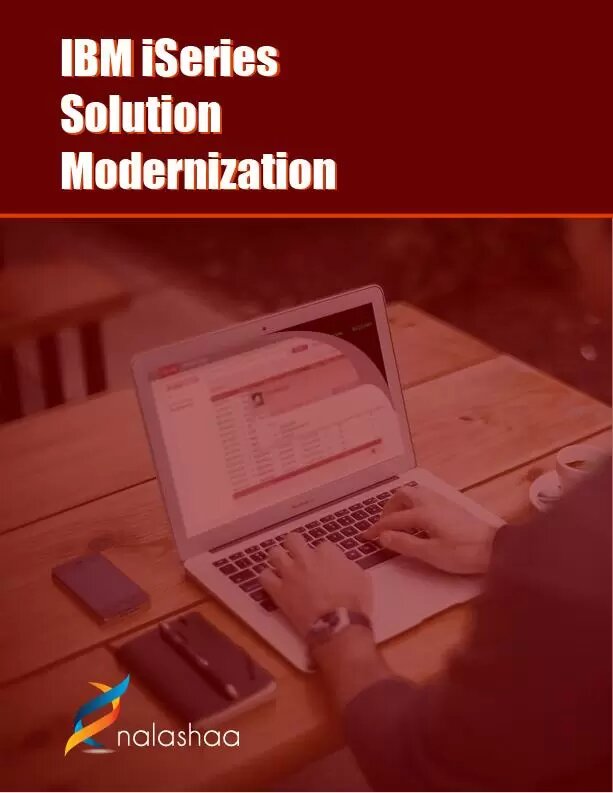AS400 modernization is the transition of IBM i 5250 applications from their traditional green screen interfaces to modern graphical interfaces, without significantly altering the underlying business logic and database.
If it’s not broken, don’t fix it.
As these systems continue to service the current needs, there are inhibitions when it comes to shaking up the status quo. But how long will you manage this status quo?
The big question is ‘Who bells the cat?’
We put in a lotta money
Time, energy, and money were spent in building/enhancing these systems, so the longer we run with the current setup, better the ROI. However, the quandary the CEOs face is
‘Is the milking of these investments worth the business risk it presents?’
Fine-tuning with time
These systems don’t see ‘amateurish’ issues, but those who shaped these systems have retired or are about to, which diminishes understanding, making future fixes/enhancement more risky.
Sounds familiar?

What are we faced with?
Current reality often dictates choices and the future becomes a reflection of choices we make today.
While the technology leadership might be apprehensive of a change, they know it is wise to bring about and might be living through nightmares waiting to happen. We have seen ‘CIOs/CTOs grapple with these challenges’ in the past:
Resource Dilemma
Leaders face a stark choice—halt progress to focus solely on support or endeavor to groom a new cohort unfamiliar with RPG, AS400, or mainframe essentials, crucial for AS400 modernization and iSeries application modernization.
Risk Management Hurdle
Mitigating risks becomes increasingly complex with a dwindling pool of skilled professionals, underscoring the vital role of individuals who crafted these systems, thus stressing the importance of iSeries AS/400 legacy support and IBMi modernization.
Integration Barriers
The steadfastness of legacy AS400 systems hampers data interoperability with contemporary technologies, challenging the realization of fluid, automated processes—a concern addressed when you modernize AS400 and with iSeries modernization efforts.
Uncertainty in Evolution
Absence of thorough documentation obscures system functionalities for business operators, making even minor code tweaks a prelude to operational disruptions, a scenario calling for sophisticated AS400 application modernization approaches.
The world has come to a point where the only way ahead is to stay in sync with technology.
What do we do?
For a problem that has been created across a couple of decades, there is no magic-bullet. However, that does not mean efforts shouldn’t be made to change the situation.
What we offer?
Life cycle services for AS400
Performance analysis, quality assurance, documentation, System Administration, and reverse engineering. We take care of everything
This includes rolling out patches, hot-fixes, minor/major releases to address enhancements/service requests from end customers. SLA driven service management ensures process alignment with end-user expectations.
As the ecosystem around AS400 systems evolve, there are frequent and ongoing needs to integrate these systems with partner systems. We can help here too.
Common partner systems are –
- Custom applications
- MS office products like Outlook, Excel, etc.
- ERPs, CRM
- Device integrations (Fingerprint scanners, phone, fax, barcode, etc.)
Porting applications to newer technologies is inevitable for business continuity.
We help you get there faster
- Adopt more modern technologies (Java, .Net, PHP or any open source)
- Web/Mobile enablement of your RPG solution
- Migrate DB2 to Oracle, SQL Server
- Give meaning to your data through reports, visualizations, and data warehouses.
How we do it?
The way it should be done is like an ERP implementation.
- Understand the system
- Document the system
- Participate in the support process
- Derisk the ‘current execution’
- Redefine & fine-tune the business processes
- Simplify the current solution
- Reassess future considerations
- Chalk out the migration plan
- Move to a modern technology
- Phased migration
- Offer ‘more’ to end users
How can we help?
Nalashaa’s knowledge about legacy applications haa helped many clients modernize AS400 and work towards meeting standard requirements faster and more cost effectively.
